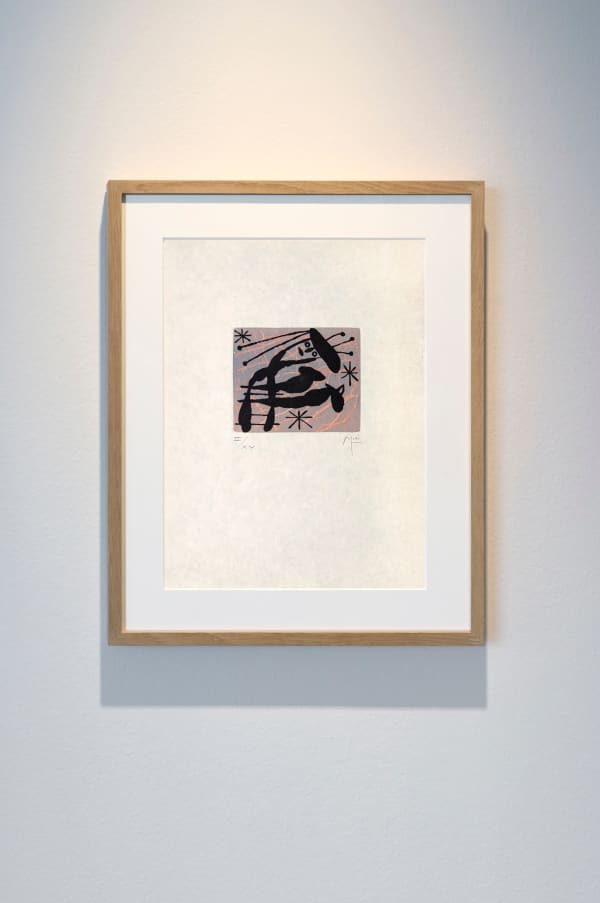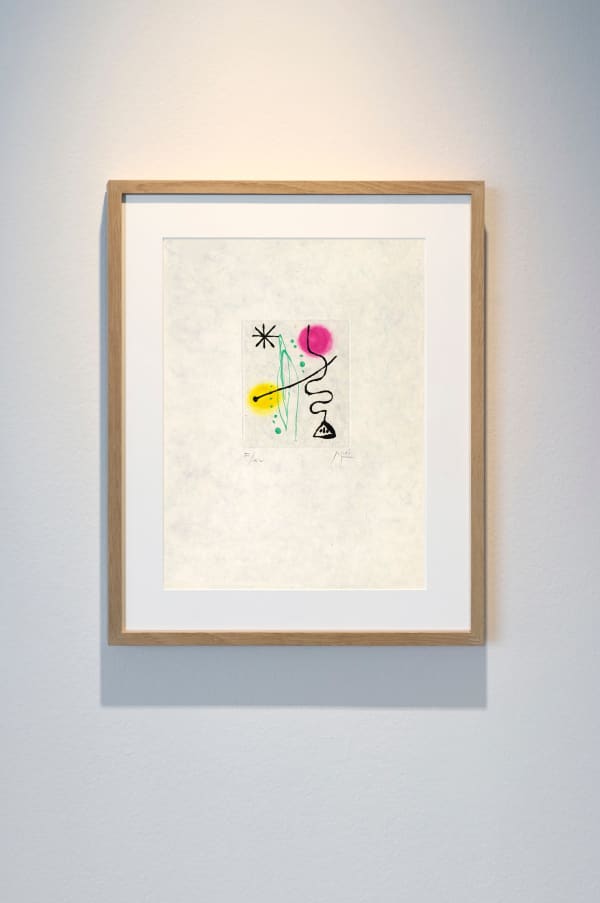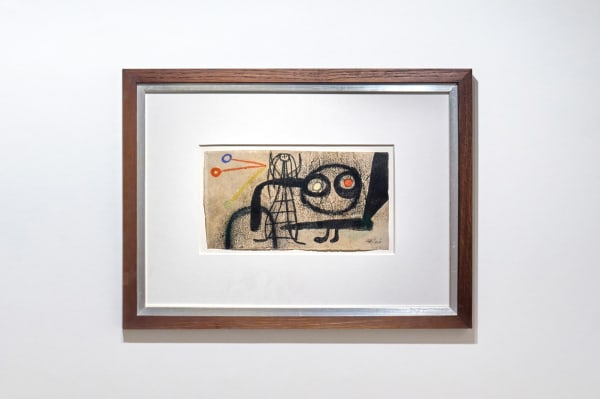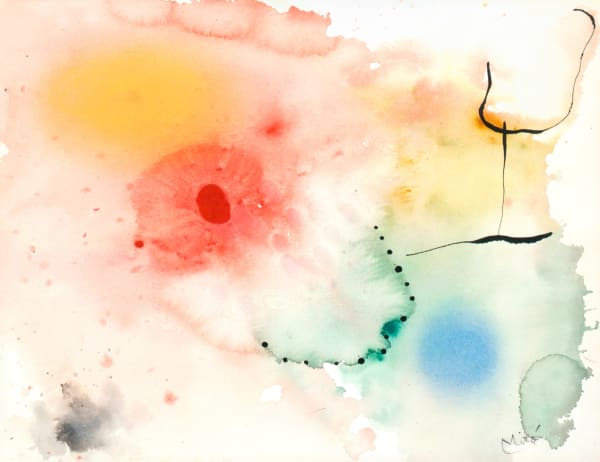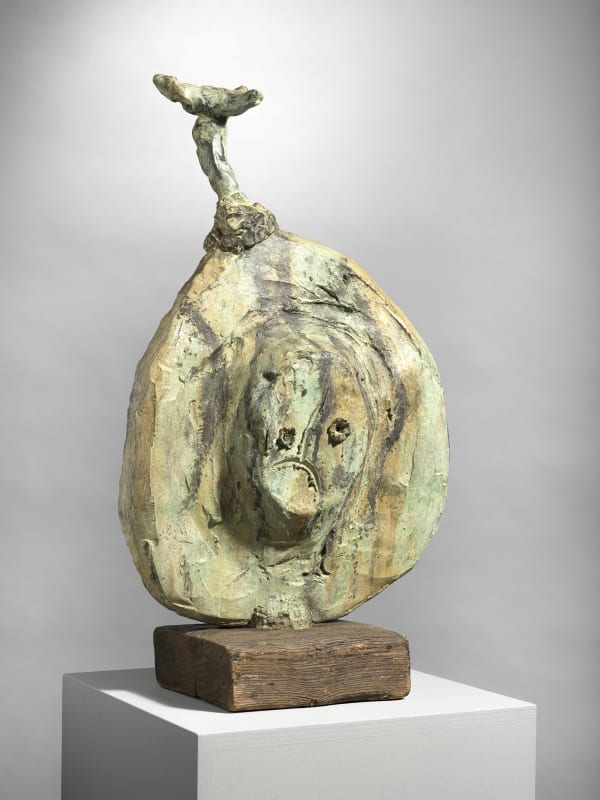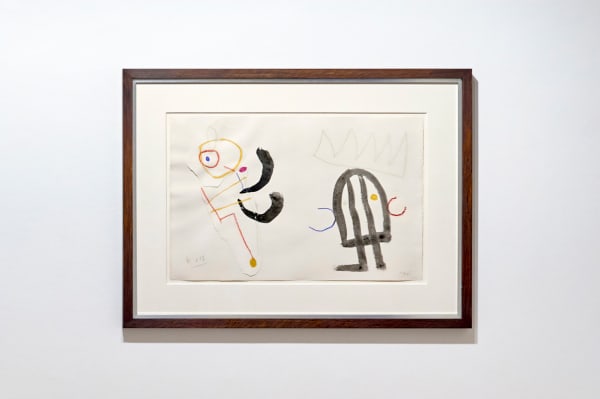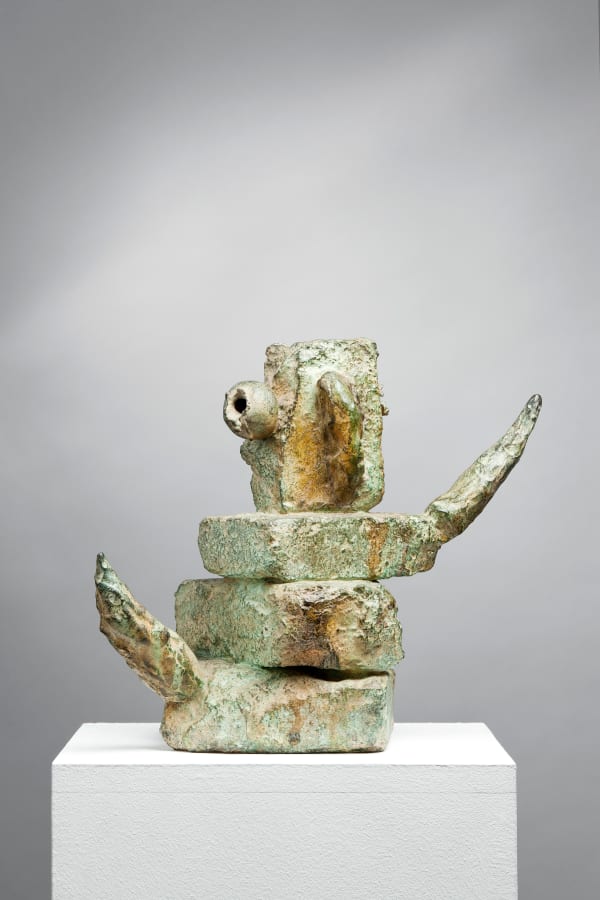Calder & Miró
-
 Joan MiróUntitled, 1949Ink wash and pastel crayon on cut paper50 x 38 cm
Joan MiróUntitled, 1949Ink wash and pastel crayon on cut paper50 x 38 cm
19 3/4 x 15 in
framed: 72 x 60 x 3 cm -
 Joan MiróHomme et Femme, 1977bronze
Joan MiróHomme et Femme, 1977bronze
Fundicio Parellada, Barcelona117 x 52 x 49 cm
46 3/50 x 20 47/100 x 19 14/50 in -
 Joan MiróUntitled I, 1938pencil and pastel on paper48 x 63 cm
Joan MiróUntitled I, 1938pencil and pastel on paper48 x 63 cm
18 9/10 x 24 4/5 in
framed: 70 x 85 x 2.5 cm -
 Joan Miró, Le Chanteur d'Opéra, 1977/1989
Joan Miró, Le Chanteur d'Opéra, 1977/1989 -
 Joan MiróPersonnage II, 1967-1972watercolour and wax crayon on paper64 x 51 cm
Joan MiróPersonnage II, 1967-1972watercolour and wax crayon on paper64 x 51 cm
25 1/4 x 20 1/8 in
framed: 100 x 86 x 4 cm -
 Joan MiróFigurations embryonnaires, 1935gouache and India ink on paper30.5 x 37 cm
Joan MiróFigurations embryonnaires, 1935gouache and India ink on paper30.5 x 37 cm
12.1 x 14.56 in
framed: 49.5 x 56 x 2.5 cm -
 Joan MiróLa Bague d'Aurore - 144, 1957engraving on paper38 x 29 cm
Joan MiróLa Bague d'Aurore - 144, 1957engraving on paper38 x 29 cm
15 x 11 3/8 in
framed: 53 x 42 x 3 cm -
 Joan MiróLa Bague d'Aurore - 141, 1957engraving on paper38 x 29 cm
Joan MiróLa Bague d'Aurore - 141, 1957engraving on paper38 x 29 cm
15 x 11 3/8 in
framed: 53 x 42 x 3 cm -
 Joan MiróLa Bague d'Aurore - 140, 1957engraving on paper38 x 28.5 cm
Joan MiróLa Bague d'Aurore - 140, 1957engraving on paper38 x 28.5 cm
15 x 11 1/4 in
framed: 53 x 42 x 3 cm -
 Joan MiróLa Bague d'Aurore - 136, 1957engraving on paper38 x 28.5 cm
Joan MiróLa Bague d'Aurore - 136, 1957engraving on paper38 x 28.5 cm
15 x 11 1/4 in
framed: 53 x 42 x 3 cm -
 Joan MiróLa Bague d'Aurore - 135, 1957engraving on paper37 x 27.5 cm
Joan MiróLa Bague d'Aurore - 135, 1957engraving on paper37 x 27.5 cm
14 5/8 x 10 7/8 in
framed: 53 x 42 x 3 cm -
 Joan MiróLa Bague d'Aurore - 133, 1957engraving on paper38 x 28 cm
Joan MiróLa Bague d'Aurore - 133, 1957engraving on paper38 x 28 cm
15 x 11 in
framed: 53 x 42 x 3 cm -
 Joan MiróMaure, 1969bronze139 x 55 x 29 cm
Joan MiróMaure, 1969bronze139 x 55 x 29 cm
54.72 x 21.65 x 11.42 in -
 Joan MiróPersonnage, oiseau, étoile, 1977Chinese ink, wax crayon, and crayon on paper47 x 58 cm
Joan MiróPersonnage, oiseau, étoile, 1977Chinese ink, wax crayon, and crayon on paper47 x 58 cm
18 1/2 x 22 7/8 in
framed: 69.5 x 81 x 4 cm -
 Joan Miró, Sans Titre, 1949
Joan Miró, Sans Titre, 1949 -
 Joan MiróSans titre, 1949charcoal, India ink, and grease pencil on paper chamois14 x 25.5 cm
Joan MiróSans titre, 1949charcoal, India ink, and grease pencil on paper chamois14 x 25.5 cm
5 1/2 x 10 in
framed: 37 x 49 x 3 cm -
 Joan Miró, Sans titre II, 1964
Joan Miró, Sans titre II, 1964 -
 Joan Miró, Sans titre XVII/XXV, 1960
Joan Miró, Sans titre XVII/XXV, 1960 -
 Joan MiróTête, oiseau, 1973/1989bronze
Joan MiróTête, oiseau, 1973/1989bronze
Fundicio Parellada, Barcelona63 x 40 x 19 cm
24 4/5 x 15 3/4 x 7 24/50 in -
 Joan MiróUntitled, 1960Pastel crayon, pastel, and collage of matchsticks on black paper33 x 50 cm
Joan MiróUntitled, 1960Pastel crayon, pastel, and collage of matchsticks on black paper33 x 50 cm
13 x 19 3/4 in
framed: 55.5 x 73 x 2.5 cm -
 Joan Miró, Totem, 1971
Joan Miró, Totem, 1971 -
 Joan MiróUntitled, 1949Chinese ink wash on cut paper59.6 x 38.7 cm
Joan MiróUntitled, 1949Chinese ink wash on cut paper59.6 x 38.7 cm
23 1/2 x 15 1/4 in
framed: 78 x 58.5 x 2.5 cm -
 Joan MiróUbu Roi, c. 1953acrylic, ink, and crayon and collage on paper32.5 x 50 cm
Joan MiróUbu Roi, c. 1953acrylic, ink, and crayon and collage on paper32.5 x 50 cm
12 3/4 x 19 3/4 in
framed: 51 x 69 x 2.8 cm -
 Joan MiróUntitled, 1949ink, charcoal and pastel on paper63.2 x 47 cm
Joan MiróUntitled, 1949ink, charcoal and pastel on paper63.2 x 47 cm
24 44/50 x 18 1/2 in
framed: 81 x 64.5 x 2.5 cm -
 Joan MiróPersonnage à bras ouverts, 1971bronze
Joan MiróPersonnage à bras ouverts, 1971bronze
25.5 x 38 x 17 cm
10.04 x 14.96 x 6.69 in










